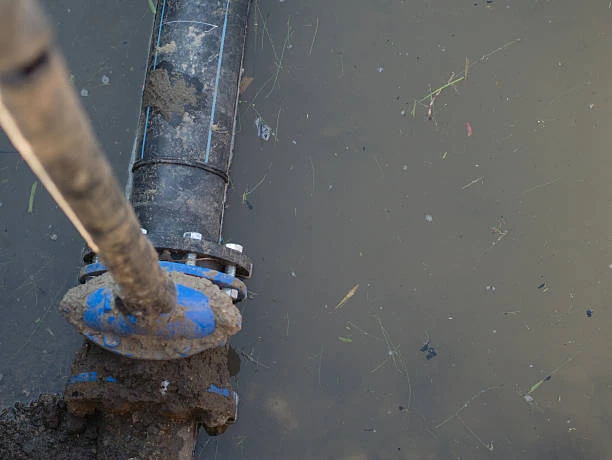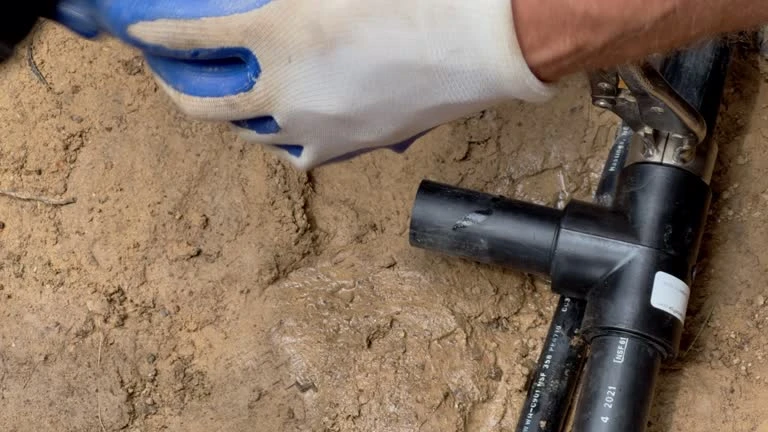High-Density Polyethylene (HDPE) has come a long way since its inception, evolving into one of the most versatile and widely used plastic materials worldwide. This article explores the evolution of HDPE, its key properties, manufacturing advancements, and the impact it has had on various industries. From its early days to its modern applications, HDPE has significantly transformed industries such as packaging, construction, and infrastructure.
What is HDPE? Understanding Its Key Properties
The evolution of HDPE starts with understanding its key characteristics. HDPE is a thermoplastic polymer made from petroleum-based monomers. Known for its high strength-to-density ratio, it is more rigid and durable than low-density polyethylene (LDPE). HDPE’s resistance to impact, UV radiation, chemicals, and moisture makes it an ideal material for a wide range of applications. Its unique properties have driven its evolution, allowing for continued advancements in design, manufacturing, and use.
The Early Days of HDPE: A Simple Beginning
The evolution of HDPE began in the 1950s. In 1953, German chemist Karl Ziegler and Italian chemist Giulio Natta discovered the polymerization process that made HDPE possible. The ability to control the polymer’s structure led to the creation of HDPE, which was initially used in relatively simple applications like plastic bottles and containers. Early HDPE production was limited, and its applications were primarily in packaging materials.
The Growth of HDPE: Expanding Applications in the 1960s and 1970s
As HDPE production technology improved in the 1960s, its applications grew beyond basic packaging. The 1960s marked the beginning of HDPE’s use in construction, particularly in water and gas piping systems. HDPE pipes offered superior durability and resistance to corrosion compared to traditional metal and concrete pipes. This new capability made HDPE a more attractive option for municipalities and contractors.
During the 1970s, HDPE also began to be used in the agricultural sector. Its resistance to UV degradation and moisture made it an ideal material for agricultural films, such as greenhouse covers and irrigation pipes. This further expanded HDPE’s reach and demonstrated its versatility as a material.
The 1980s and 1990s: Innovation and Improvement
In the 1980s, HDPE began to see significant advancements in manufacturing processes. Extrusion techniques became more sophisticated, allowing for more precise control over the thickness and properties of HDPE products. This led to the development of HDPE sheets, films, and other products that could be used in diverse applications, from geomembranes to packaging materials.
The 1990s saw a major boost in the use of HDPE in environmental and infrastructure applications. HDPE geomembranes, used for lining landfills, ponds, and waste containment facilities, became a key product during this period. The ability of HDPE to resist chemical attacks and withstand harsh environmental conditions made it an ideal choice for these challenging applications.
The Evolution of HDPE Manufacturing Techniques
Advancements in Polymerization and Production Methods
The evolution of HDPE would not have been possible without continuous improvements in polymerization techniques. Early methods of producing HDPE involved using low-pressure conditions. However, innovations such as high-pressure polymerization, developed in the 1950s and 1960s, allowed for greater control over molecular structure, improving the material’s strength, stiffness, and other mechanical properties.
By the 1990s, Ziegler-Natta catalysts and metallocene catalysts revolutionized HDPE production, enabling manufacturers to produce more consistent and uniform polymers. This level of control improved HDPE’s performance in specific applications, such as in pipe extrusion, where uniform thickness and strength are crucial.
Advancements in Recycling and Sustainability
The evolution of HDPE has also seen a growing focus on sustainability and recycling. In the early stages, HDPE products were often discarded after use, but advancements in recycling technologies have allowed for greater reuse of HDPE material. HDPE is now widely recycled, and post-consumer recycled HDPE (PCR-HDPE) is used to produce a range of products, including new containers, pipes, and even clothing.
Recycling HDPE not only reduces the amount of plastic waste but also conserves resources by allowing manufacturers to reuse the material in the production of new products. As the demand for sustainable solutions increases, the recycling of HDPE will likely continue to play a significant role in its evolution.
The Role of Additives in HDPE Development
Additives have played a critical role in the evolution of HDPE by enhancing its properties and expanding its range of applications. In the early days, HDPE was primarily used in its natural form. Over time, manufacturers began incorporating various additives, such as UV stabilizers, antioxidants, and flame retardants, to improve its performance in different environments.
For instance, UV stabilizers help protect HDPE products from the damaging effects of sunlight, increasing their lifespan when used outdoors. Antioxidants prevent the material from degrading over time, while flame retardants improve HDPE’s resistance to fire, making it suitable for use in construction and other high-risk applications.

Modern Applications of HDPE
HDPE in the Packaging Industry
One of the most significant sectors benefiting from the evolution of HDPE is the packaging industry. HDPE has become the material of choice for bottles, containers, and caps due to its excellent strength, safety, and versatility. The development of blow molding technology enabled manufacturers to produce HDPE bottles in a variety of shapes and sizes, making them ideal for beverages, household products, and personal care items.
HDPE packaging is also highly durable and resistant to impact and moisture, helping to preserve product integrity. In recent years, HDPE containers have increasingly become recyclable, further enhancing their environmental benefits.
HDPE in Construction and Infrastructure
HDPE’s evolution has been particularly impactful in the construction and infrastructure sectors. HDPE pipes are now commonly used for water supply, gas distribution, and sewage systems due to their resistance to corrosion and ability to withstand harsh conditions. The flexibility and durability of HDPE make it an ideal solution for underground applications.
In addition, HDPE geomembranes are widely used in environmental applications, such as landfill liners, water reservoirs, and mining operations. These membranes provide a barrier to contaminants and prevent soil and water pollution.
HDPE in the Agricultural Sector
The agricultural industry has also benefited from HDPE’s unique properties. The evolution of HDPE products such as drip irrigation systems, greenhouse films, and silage bags has transformed farming practices.
HDPE films used in greenhouses provide excellent light diffusion while protecting crops from harsh weather conditions. These products help increase crop yields and improve overall agricultural productivity.
The Future of HDPE: What’s Next?
The future of HDPE is bright, with ongoing research and development focusing on improving its properties and expanding its applications. The rise of circular economies and sustainable practices means that recycling will become an even more integral part of HDPE’s lifecycle. In addition, new innovations in additive manufacturing and composite materials may lead to stronger, more versatile HDPE products in the future.
As industries continue to prioritize environmental sustainability, HDPE will likely remain a key material due to its recyclability, durability, and versatility.
Conclusion: A Material with Endless Possibilities
The evolution of HDPE is a testament to its adaptability and enduring value across multiple industries. Its durability, sustainability, and versatility ensure that HDPE will continue to play an essential role in the years to come.
Frequently Asked Questions (FAQs)
- What is HDPE? HDPE (High-Density Polyethylene) is a durable and versatile plastic known for its strength, flexibility, and resistance to environmental factors.
- When was HDPE first developed? HDPE was first developed in the 1950s by chemists Karl Ziegler and Giulio Natta, who discovered the polymerization process.
- What are the main applications of HDPE today? Today, HDPE is used in packaging, construction (pipes and geomembranes), agriculture (irrigation systems), and more.
- Is HDPE recyclable? Yes, HDPE is highly recyclable and can be reused to create new products, reducing environmental impact.
- How does HDPE compare to other plastics? HDPE is stronger, more rigid, and more resistant to chemicals and UV light compared to many other plastics, making it suitable for demanding applications.


















